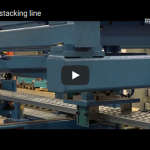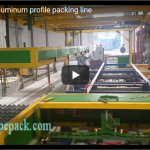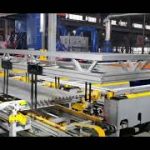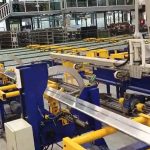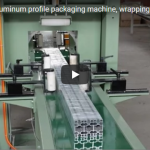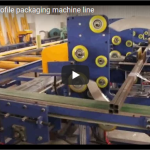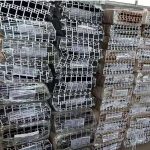The video of the Automatic Aluminum profile basket stacking line that for gathering the profiles and filling into the basket.
The Automatic Aluminum Profile Basket Stacking Line is an innovative system that is designed to streamline the process of gathering aluminum profiles and filling them into baskets with maximum efficiency and precision. The system is equipped with advanced automation features that enable it to handle the entire process with minimal operator intervention.
The Automatic Aluminum Profile Basket Stacking Line is operated by a single operator, making it a cost-effective solution for businesses looking to optimize their production processes and reduce labor costs. The system is equipped with a spacer feeding station that is located alongside the conveyor line, enabling automatic position feeding of the profiles. The profiles are then automatically handled by a gantry crane lifter with servo system, ensuring that they are positioned correctly in the baskets.
One of the key advantages of the Automatic Aluminum Profile Basket Stacking Line is its user-friendly design. The system is easy to operate and can be quickly adapted to a wide range of aluminum profile sizes and specifications. Additionally, the system is equipped with advanced safety features that ensure the well-being of operators and prevent accidents.
The Automatic Aluminum Profile Basket Stacking Line is an ideal solution for businesses that need to handle large volumes of aluminum profiles quickly and efficiently. It is widely used by manufacturers and suppliers of aluminum profiles, as well as by shipping and logistics companies that handle aluminum profile shipments. With its advanced features and reliable performance, the Automatic Aluminum Profile Basket Stacking Line is a must-have for any business that wants to enhance its production capabilities.
If you’re interested in learning more about the Automatic Aluminum Profile Basket Stacking Line, please contact us at info@fhopepack.com. Our expert team will be happy to provide you with all the information you need to make an informed decision about this innovative and cost-effective solution for aluminum profile handling.
info@fhopepack.com
